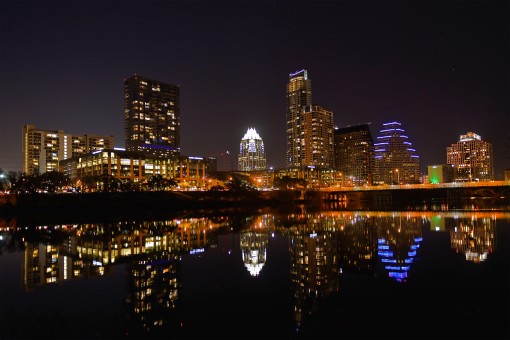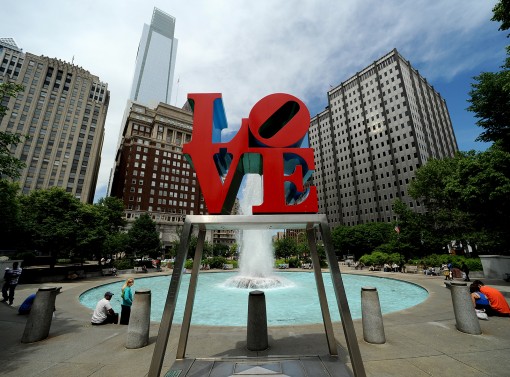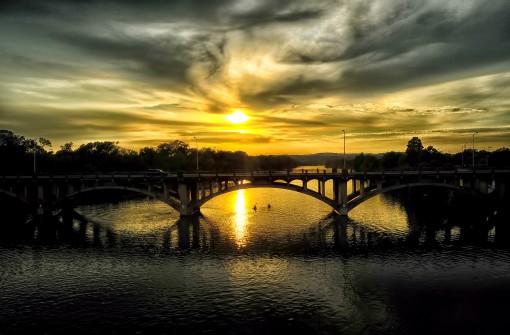Great Cities, Great Spaces
January 21, 2014 | By Shoal Creek Conservancy
This blog post was written by Ted Lee Eubanks. To learn more about the author, please visit this site.

The rust-stained Colorado River ebbs to Matagorda Bay and the Gulf of Mexico. Shoal Creek meanders south to the Colorado River, an Austin river now an Austin lake. The recent upsurge in residential development along Lady Bird Lake has given Austin a waterfront where none before existed. Shoal Creek laps near the foundations of new high-rise condos and hotels.
Cities along oceans or lakes begin with at least one border defined by water. These borders also help define the perspectives of those who live in the city. Extreme examples include islands such as Galveston where the entire city is circumscribed by water. In all of these instances, the cities, and their residents, were and are defined by water from their nascence.
Not so Austin. Springs such as Barton offered early settlers an abundant supply of drinking water. The Colorado stood more as a barrier than an asset. Austin offered white rocks and cedar trees, and little more. Yet, with the impounding of Town Lake (now Lady Bird Lake), the dirt-stained Colorado became one of Austin’s characteristic landscapes. The Austin skyline reflected in the waters of Lady Bird Lake now defines Austin in the eyes of the world.
Yet, Lady Bird Lake has existed for a little over 50 years, a brief blink of an eye in the history of the city. The lake didn’t begin as a “lake.” The city needed cooling water for the Holly Street Power Plant. Recreational benefits were a byproduct.
By the 1970s Town Lake (the original name of the lake) had become a fetid cesspool. Mayor Roy Butler joined with Lady Bird Johnson to create the Town Lake Beautification Committee. The “beautification” of Town Lake, now Lady Bird Lake, continues to this day.
Austin’s lakeshore consciousness is still evolving. We are only now raising the public’s awareness of Shoal Creek as a public space. Waller Creek and Lady Bird Lake are two additional examples of public spaces that are only now attracting a level of interest and support that is necessary for them, too, to become great public spaces.

New York, Philadelphia, and Chicago are examples of great American cities that contain great American spaces. Many of these public spaces arose during the City Beautiful movement in the late 1800s to early 1900s. Newer cities, such as Atlanta, have not shied away from embracing great spaces. Atlanta, for example, recently unveiled a 17-year plan to complete a 22-mile transit-greenway loop with an anticipated $4.4 billion investment.
In the late 1800s we were hard-scrabbled, worried about survival rather than beautification. Yet now, as the city has become one of the most successful in this nation, it is time to return to the City Beautiful concepts first put forward by Omsted, Burnham, and others in the late 1800s.
Chicago is still guided by the principles put forth in the 1909 Plan of Chicago, known as the Burnham Plan. After the 1893 World’s Columbian Exposition in Chicago, Daniel Burnham presented the city with ideas for improving Chicago’s lakefront. Today, Chicago is blessed with 20 miles of lake shore and great spaces such as Millennium Park. Chicago’s greatness is no accident.
Philadelphia developed the Benjamin Franklin Parkway as a public works project, converting miles of slums and tenements into one of the most prestigious collections of museums in the nation. A visitor to Philadelphia would be hard pressed to believe that the Parkway has not always been the cultural epicenter of the city. Yet, inspired by the City Beautiful movement, Philadelphia invented its future.
Yet great spaces in the 21st Century are a balancing act. The public works projects of the late 1800s, those icons of the City Beautiful movement, also displaced the disadvantaged. It took Jane Jacobs, in The Death and Life of Great American Cities, to remind planners and city leaders that cities are formed of, by, and for the people who live in them.
Cities have the capability of providing something for everybody, only because, and only when, they are created by everybody.
Austin has no Burnham Plan. Austin has no Benjamin Franklin Parkway. Austin has no Wissahickon. We improve our spaces on an ad hoc, piecemeal basis.
Yet to become a great city, Austin will need great spaces like those designed by Daniel Burnham and Frederick Law Olmsted, fashioned with a Jacobsian sensibility for the people. Shoal Creek can serve as a model for how such a plan is developed and implemented. We, the Shoal Creek Conservancy, are committed to this end.

